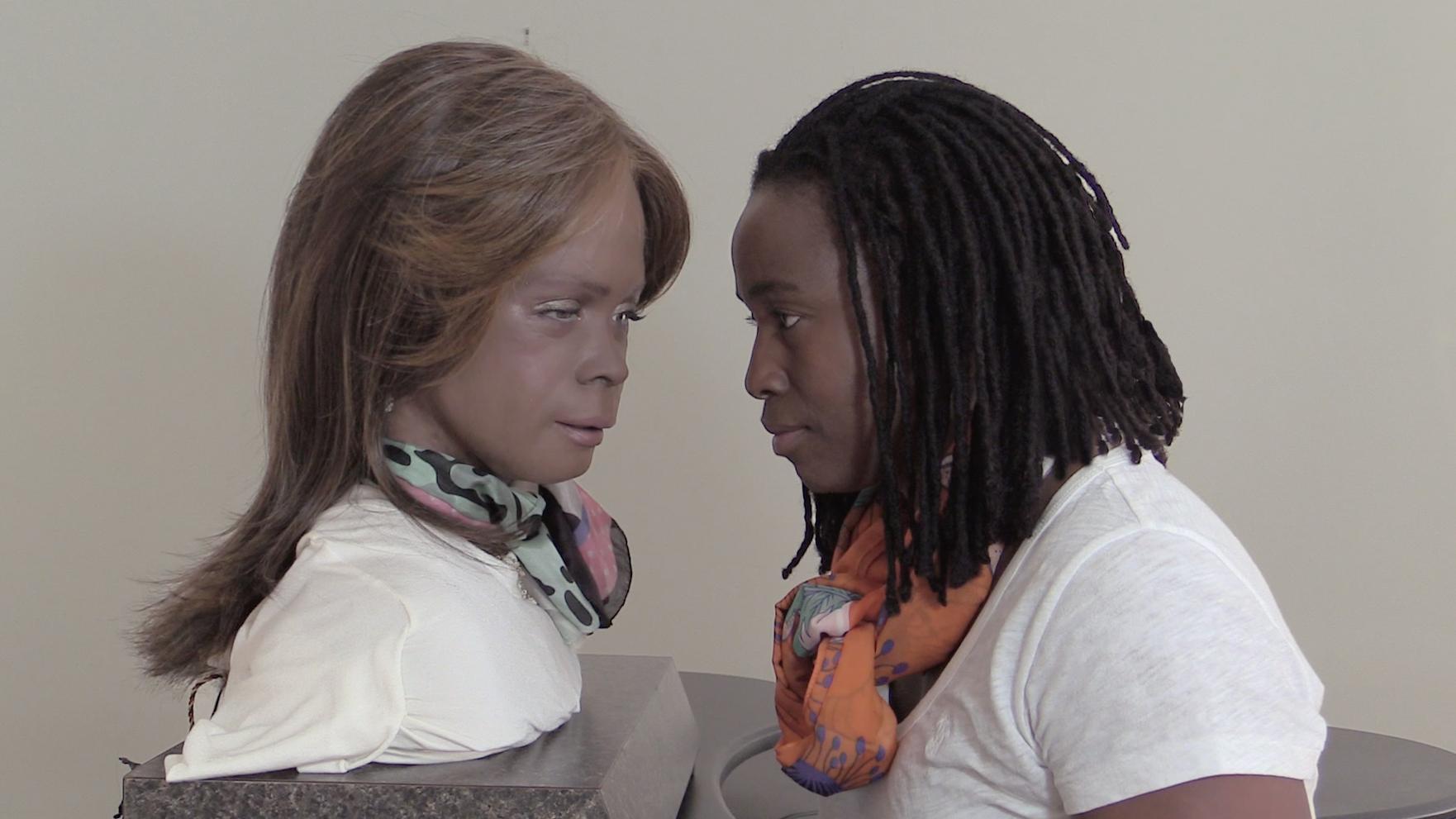In Detail
Ian Cheng’s digitally simulated AI creature BOB (Bag of Beliefs) reflects on the interdependency of carbon and silicon forms of intelligence. An algorithmic Tamagotchi, it is capable of evolution, but its growth, behavior, and personality are molded by online interaction with visitors who assume collective responsibility for its wellbeing. In A.A.I. (artificial artificial intelligence), an installation of multiple termite mounds of colored sand, gold, glitter and crystals, Agnieszka Kurant offers a vibrant critique of new AI economies, with their online crowdsourcing marketplace platforms employing invisible armies of human labor at sub-minimum wages.
Simon Denny ‘s Amazon worker cage patent drawing as virtual King Island Brown Thornbill cage (US 9,280,157 B2: “System and method for transporting personnel within an active workspace”, 2016) (2019) also examines the intersection of labor, resources, and automation. He presents 3-D prints and a cage-like sculpture based on an unrealized machine patent filed by Amazon to contain human workers. Inside the cage an augmented reality application triggers the appearance of a King Island Brown Thornbill -- a bird on the verge of extinction; casting human labor as the proverbial canary in the mine. The humanitarian and ecological costs of today’s data economy also informs a group of works by the Zairja Collective that reflect on the extractive dynamics of algorithmic data mining.
Hito Steyerl addresses the political risks of introducing machine learning into the social sphere. Her installation The City of Broken Windows presents a collision between commercial applications of AI in urban planning along with communal and artistic acts of resistance against neighborhood tipping: one of its short films depicts a group of technicians purposefully smashing windows to teach an algorithm how to recognize the sound of breaking glass, and another follows a group of activists through a Camden, NJ neighborhood as they work to keep decay at bay by replacing broken windows in abandoned homes with paintings.
Addressing the perpetuation of societal biases and discrimination within AI, Trevor Paglen’s They Took the Faces from the Accused and the Dead…(SD18), presents a large gridded installation of more than three thousand mugshots from the archives of the American National Standards Institute. The institute's collections of such images were used to train ealry facial-recognition technologies -- without the consent of those pictured. Lynn Hershman Leeson’s new installation Shadow Stalker critiques the problematic reliance on algorithmic systems, such as the military forecasting tool Predpol now widely used for policing, that categorize individuals into preexisting and often false “embodied metrics.”
Stephanie Dinkins extends the inquiry into how value systems are built into AI and the construction of identity in Conversations with Bina48, examining the social robot’s (and by extension our society’s) coding of technology, race, gender and social equity. In the same territory, Martine Syms posits AI as a “shamespace” for misrepresentation. For Mythiccbeing she has created an avatar of herself that viewers can interact with through text messaging. But unlike service agents such as Siri and Alexa, who readily respond to questions and demands, Syms’s Teeny is a contrarious interlocutor, turning each interaction into an opportunity to voice personal observations and frustrations about racial inequality and social injustice.
Countering the abusive potential of machine learning, Forensic Architecture pioneers an application to the pursuit of social justice. Their proposition of a Model Zoo marks the beginnings of a new research tool for civil society built of military vehicles, missile fragments, and bomb clouds—evidence of human-rights violations by states and militaries around the world. Christopher Kulendran Thomas’s video Being Human, created in collaboration with Annika Kuhlmann, poses the philosophical question of what it means to be human when machines are able to synthesize human understanding ever more convincingly. Set in Sri Lanka, it employs AI-generated characters of singer Taylor Swift and artist Oscar Murillo to reflect on issues of individual authenticity, collective sovereignty, and the future of human rights.
Lawrence Lek’s sci-fi-inflected film Aidol, which explores the relationship between algorithmic automation and human creativity, projects this question into the future. It transports the viewer into the computer-generated “sinofuturist” world of the 2065 eSports Olympics: when the popular singer Diva enlists the super-intelligent Geomancer to help her stage her artistic comeback during the game’s halftime show, she unleashes an existential and philosophical battle that explodes the divide between humans and machines.































